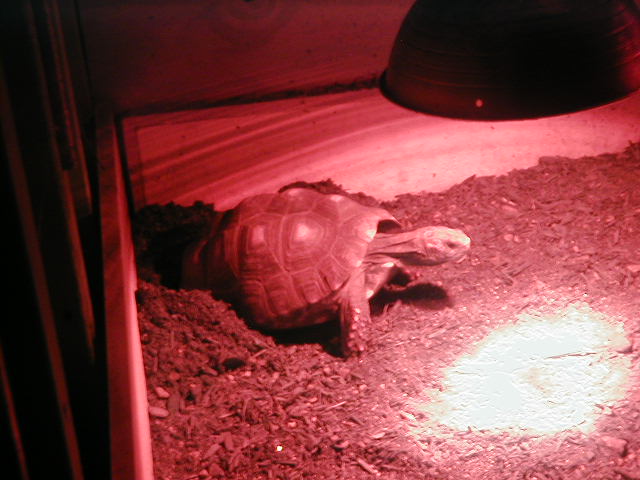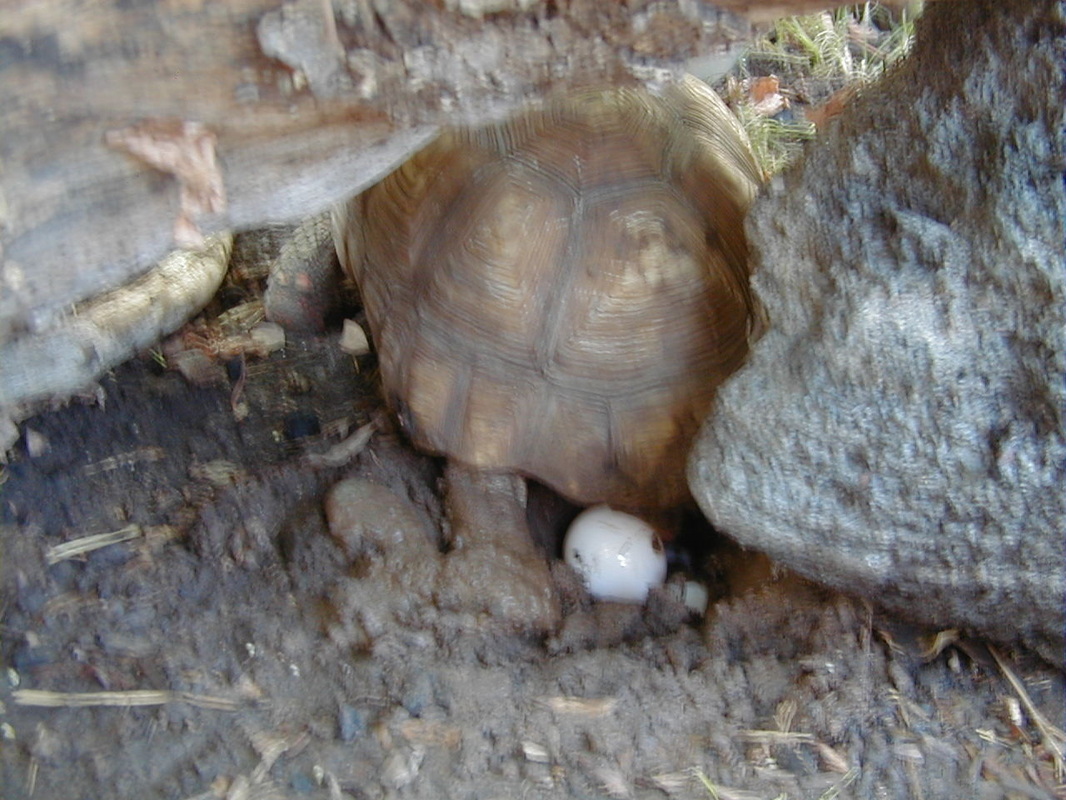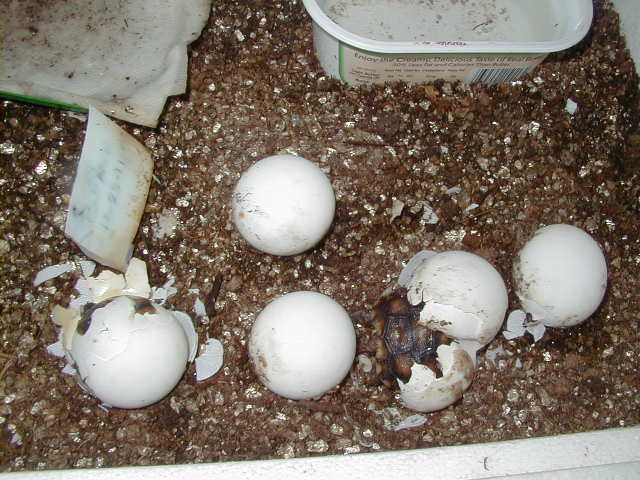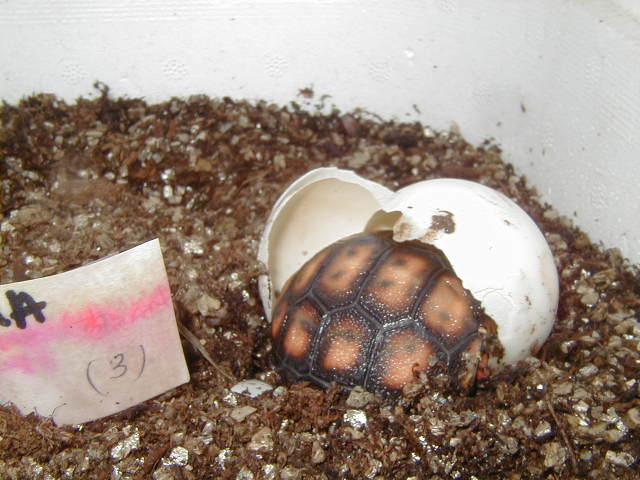The mating ritual of Redfoot tortoises involves some very distinctive head
movements on the part of the male. He begins by standing side-by-side with
another tortoise and moving his head suddenly to one side, then returning it
to the middle, in a series of sideways jerking motions. If the second
tortoise is a
male, he will respond with similar head movements, and some
characteristic pushing and shoving may then ensue. If, however, the second
tortoise is a female, she will not move her head in response. The male will
move around to sniff at her tail, to confirm what he already suspects,
before mating begins.
For mating to proceed, the movements of the head have
to be precise to entice the female.
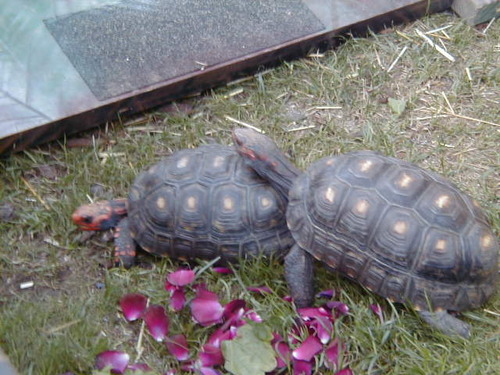

Redfoot tortoises will lay eggs year round. However they seem to the most consistent during the fall and early winter months, usually before or after a slight rain. Redfoots’ lay rather large round eggs. Clutch typically consists of 2-4 eggs, although large females are capable of producing 6-10 each clutch. Egg size is variable and seems to be related to the size of the female and the number of eggs per clutch. They weigh 30-50 grams and are usually 40-45 mm in diameter. Red-foot eggs are temperature sex dependent, incubation temperatures above 88 degrees F (31 degrees C) will produce females, and temperatures below 82 degrees F (28 degrees C) will produce males .High temperatures however, can cause lower hatch rates and higher rates of deformed hatchlings. The ideal incubation temperature, if mixed-sex offspring are desired, is 84 degrees F (29 degrees C). Incubation periods range from 110 to 180 days, with an average of 140 days . |
It is important that more than one male be included in a breeding group, male
to male combat is important in inducing breeding in red-foots.
Male to male combat begins with a round of head bobbing from each male
involved, and then proceeds to a wresting match where the males attempt to turn
one another over. The succeeding male (usually the largest male) then attempts
to mate with the females. The ritualistic head movements displayed by male
red-foots are thought to be a method of species recognition.
to male combat is important in inducing breeding in red-foots.
Male to male combat begins with a round of head bobbing from each male
involved, and then proceeds to a wresting match where the males attempt to turn
one another over. The succeeding male (usually the largest male) then attempts
to mate with the females. The ritualistic head movements displayed by male
red-foots are thought to be a method of species recognition.
